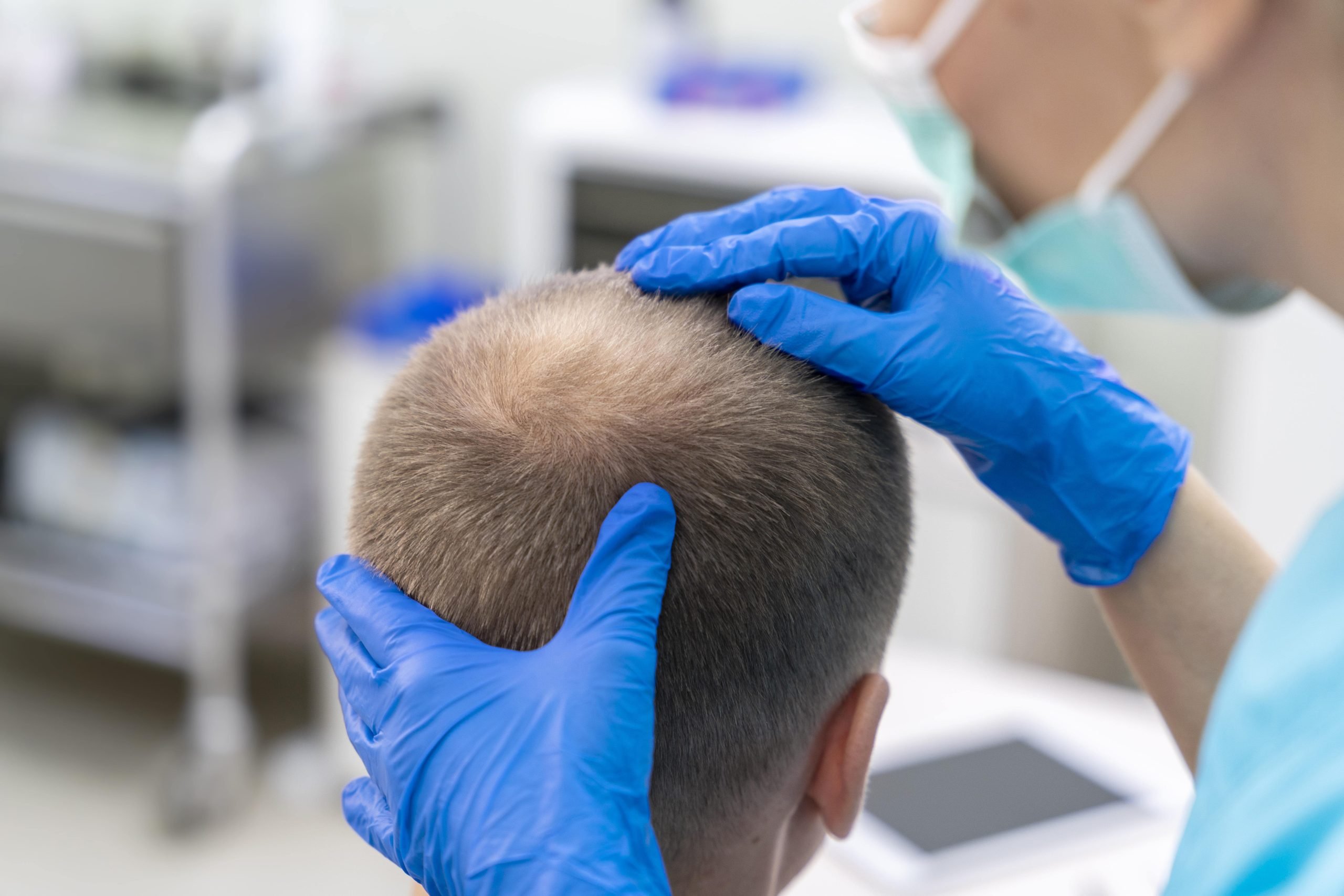The procedure in top Riyadh clinics (primarily using the FUE or DHI methods) follows a standard, meticulous sequence.
Here is a step-by-step guide to the hair transplant in Riyadh process, from initial consultation to the final results:

🗺️ Step-by-Step Hair Transplant Process (Riyadh Edition)
The overall process is divided into three major phases: Preparation, Surgery Day, and Recovery/Growth.
Phase 1: Pre-Procedure & Consultation
StepDescriptionWhat to Expect1. Initial ConsultationYou meet with the surgeon (often a dermatologist or specialized hair surgeon) to discuss your goals, assess your hair loss pattern, and examine your donor area (typically the back of the head).The surgeon will determine if you are a good candidate, recommend the best technique (FUE or DHI), and map out a natural-looking hairline design.2. Pre-Operative TestsBlood tests are mandatory to check for underlying health issues, blood sugar levels, and infections. This ensures the procedure is safe.The surgeon will provide instructions on what to avoid, such as stopping blood-thinning medications (like Aspirin) and avoiding smoking/alcohol for a period before the surgery.3. Preparation DayThe donor area is trimmed or completely shaved (varies by technique and clinic preference). The surgeon marks the donor and recipient areas on your scalp.The clinic staff will review the day's schedule and provide a final comfort check.Phase 2: The Surgery Day (4 to 8 Hours)
The surgery is conducted under local anesthesia, meaning you are awake but your scalp is completely numb.
StepDescriptionWhat to Expect During This Step4. Anesthesia AdministrationLocal anesthesia is injected into the donor and recipient areas.This is typically the only part where you feel sharp discomfort (multiple small pricks), but once complete, the rest of the procedure is painless.5. Graft Extraction (Harvesting)(FUE/DHI): Using a micro-punch tool (0.8mm to 1.0mm), individual follicular units (grafts) are carefully extracted one by one from the donor area.You will lie face-down or on your side. You might hear the faint sound of the extraction device. This is the longest part of the process.6. Graft Preservation & PreparationThe extracted grafts are immediately placed in a specialized, chilled solution to maintain their viability and maximize their survival rate.A surgical team meticulously cleans, sorts, and counts the grafts based on the number of hairs (1-4 hairs per unit).7. Recipient Site Creation(FUE): The surgeon creates tiny incisions in the balding area, controlling the angle, direction, and density of the future hair growth. (DHI): This step is skipped, as DHI uses a pen to implant directly.This is a critical step for a natural look. The surgeon carefully works to match your original growth patterns.8. Implantation (Placement)(FUE): The harvested grafts are carefully placed into the pre-made incisions using specialized micro-forceps. (DHI): The grafts are loaded into a Choi Implanter Pen and implanted directly into the scalp, which combines the incision and placement steps.You are typically lying on your back. The team works meticulously, and you can listen to music or watch TV.9. Post-Op DressingThe donor area is cleaned and bandaged. The recipient area is usually left uncovered or lightly dressed.You receive a final set of verbal and written aftercare instructions and are given prescribed medications (painkillers, antibiotics, anti-inflammatories).Phase 3: Recovery and Growth Timeline
TimeframeKey EventWhat to ExpectDay 1 - 7Initial HealingSwelling in the forehead/eyes (days 1-3) and scabbing in the recipient area are normal. You will receive your first hair wash at the clinic (usually Day 1 or 2) and be given strict instructions for sleeping (elevated) and care.Weeks 2 - 4"Shock Loss" PhaseThe visible hair shafts from the transplanted grafts will shed. This is expected and normal, as the follicle has entered a resting phase. The implanted hair root is secured.Months 3 - 4Early RegrowthNew, fine, and wispy hairs begin to emerge from the transplanted follicles.Months 6 - 9Significant GrowthThe transplanted hair thickens, gains color, and becomes noticeable. You will see a significant improvement in density and coverage.Months 12 - 18Final ResultsThe hair fully matures, achieving its final density, texture, and natural appearance.




Comments